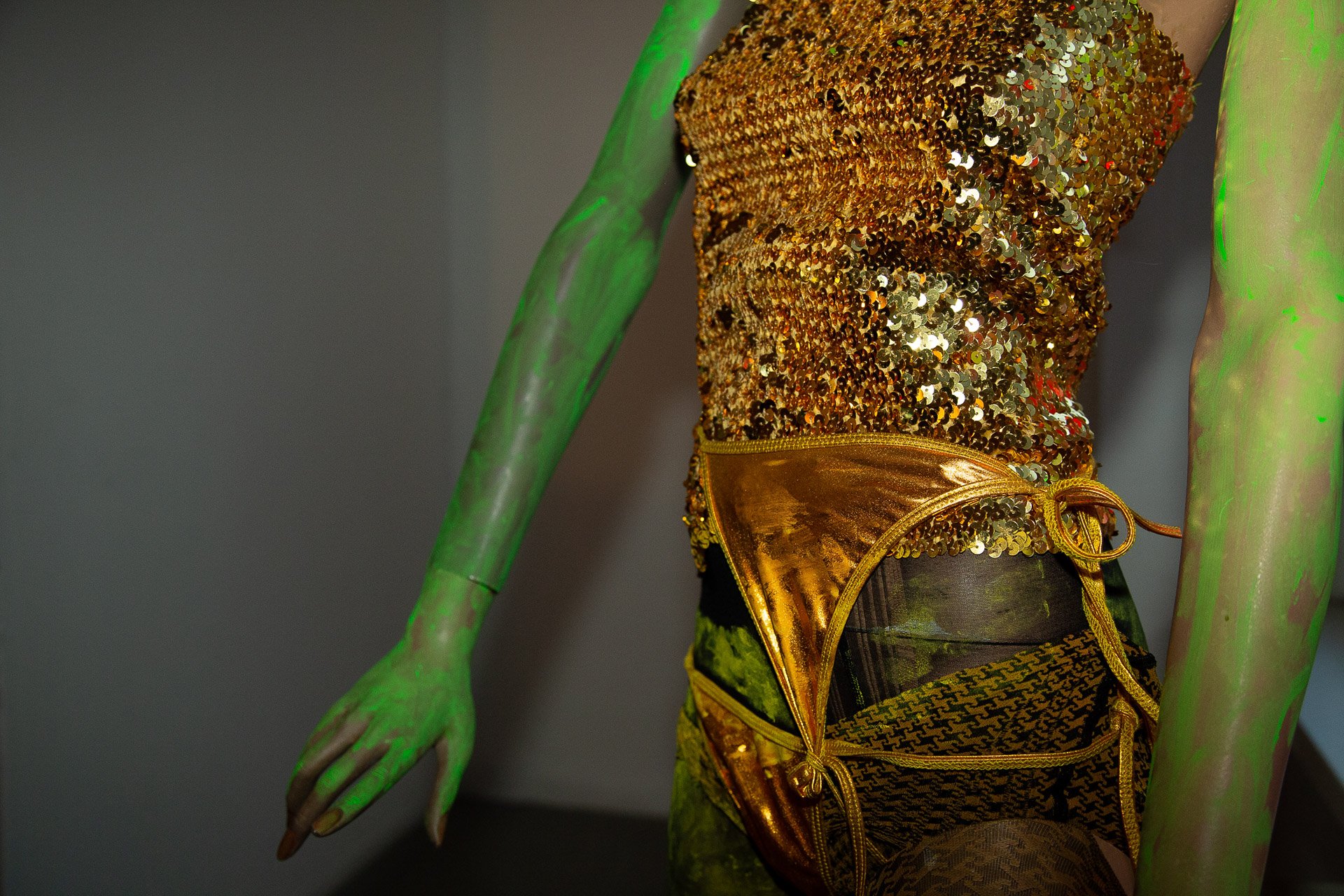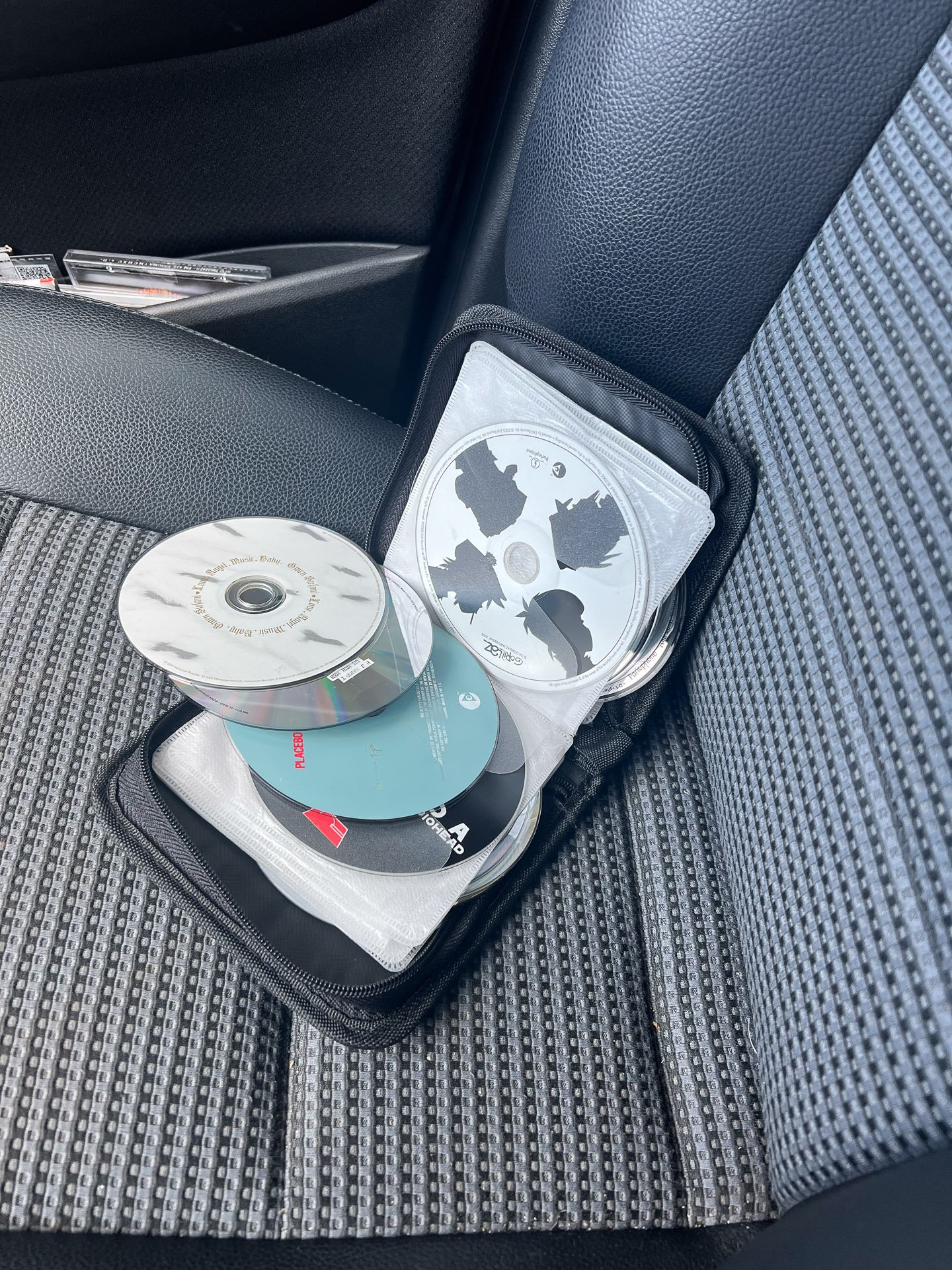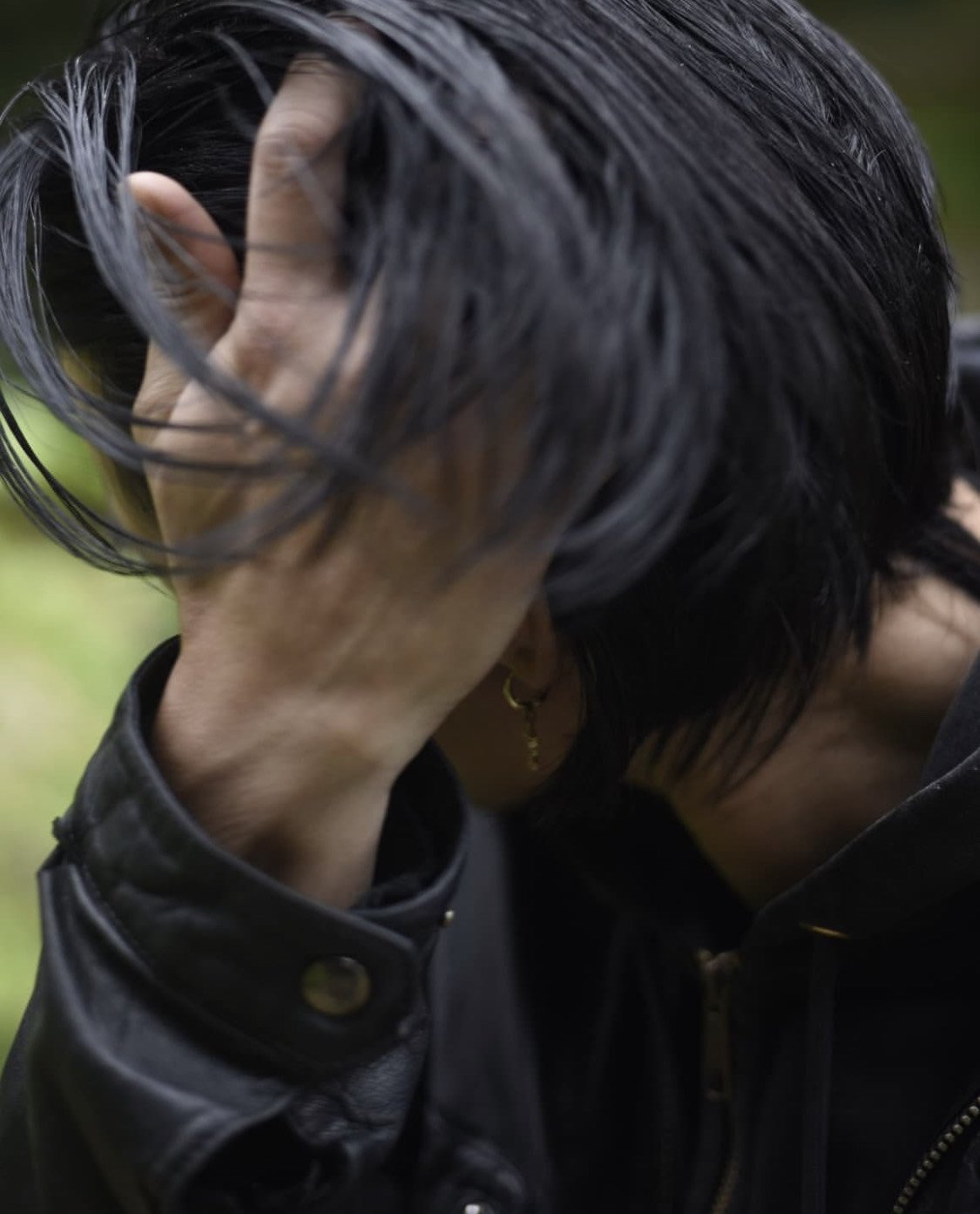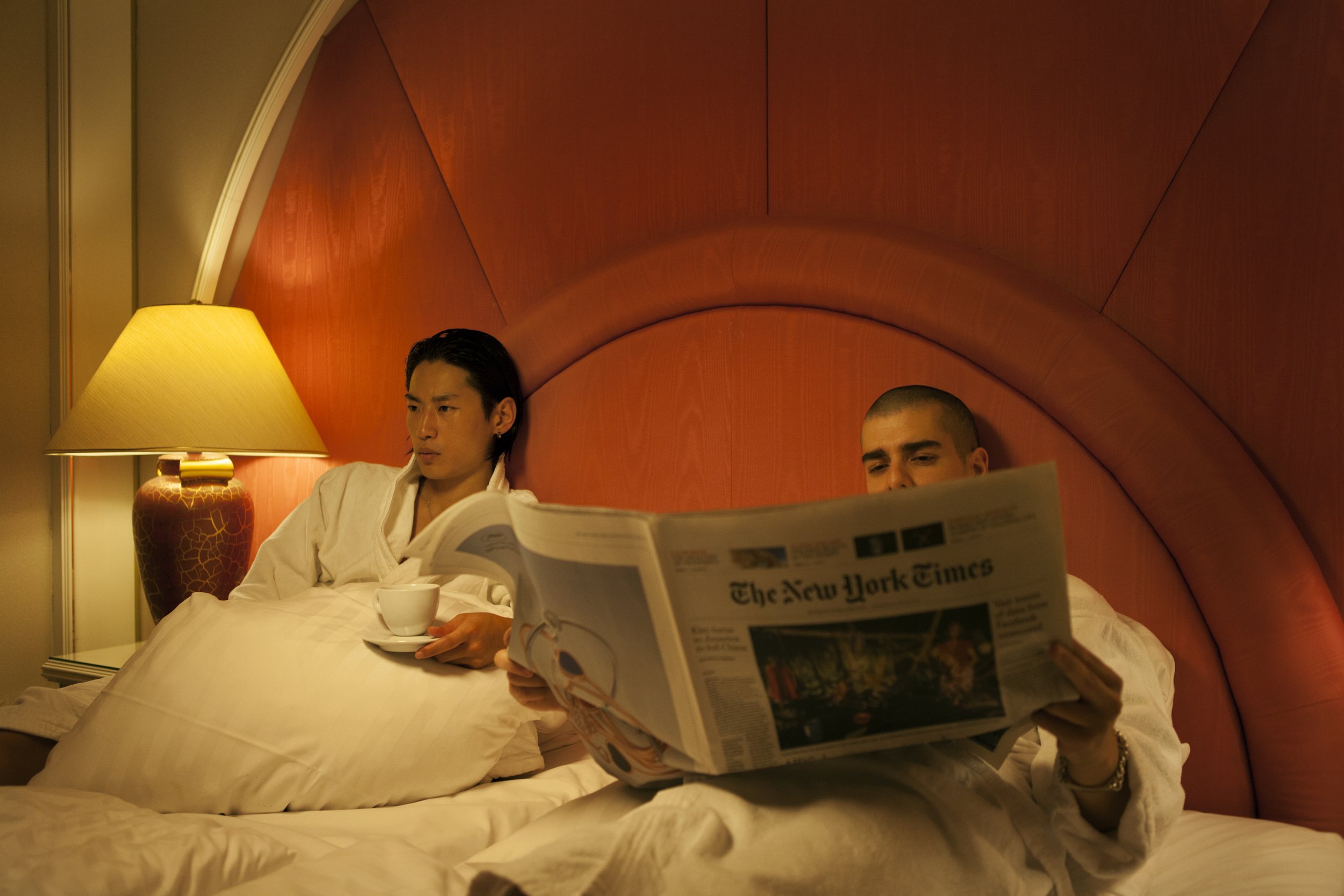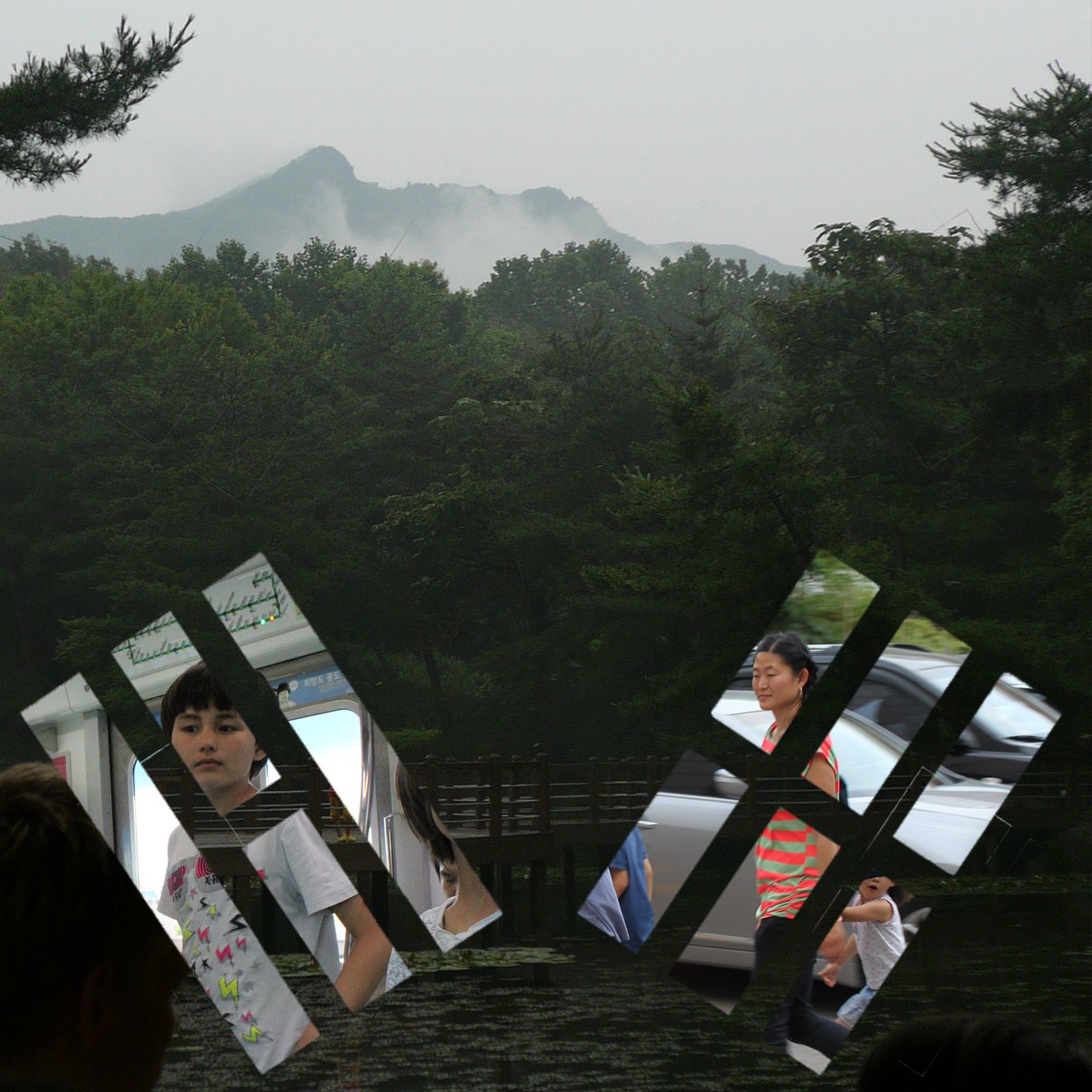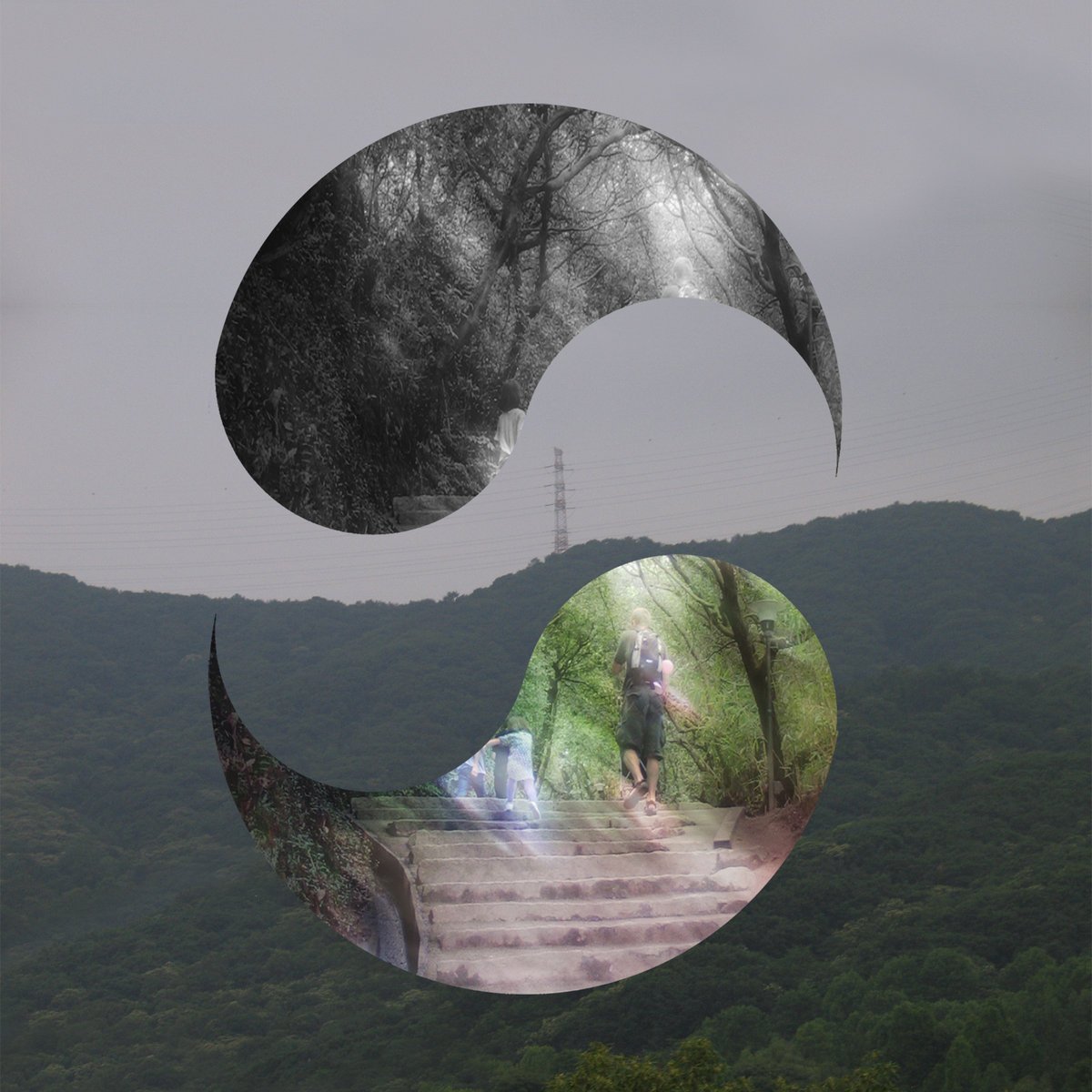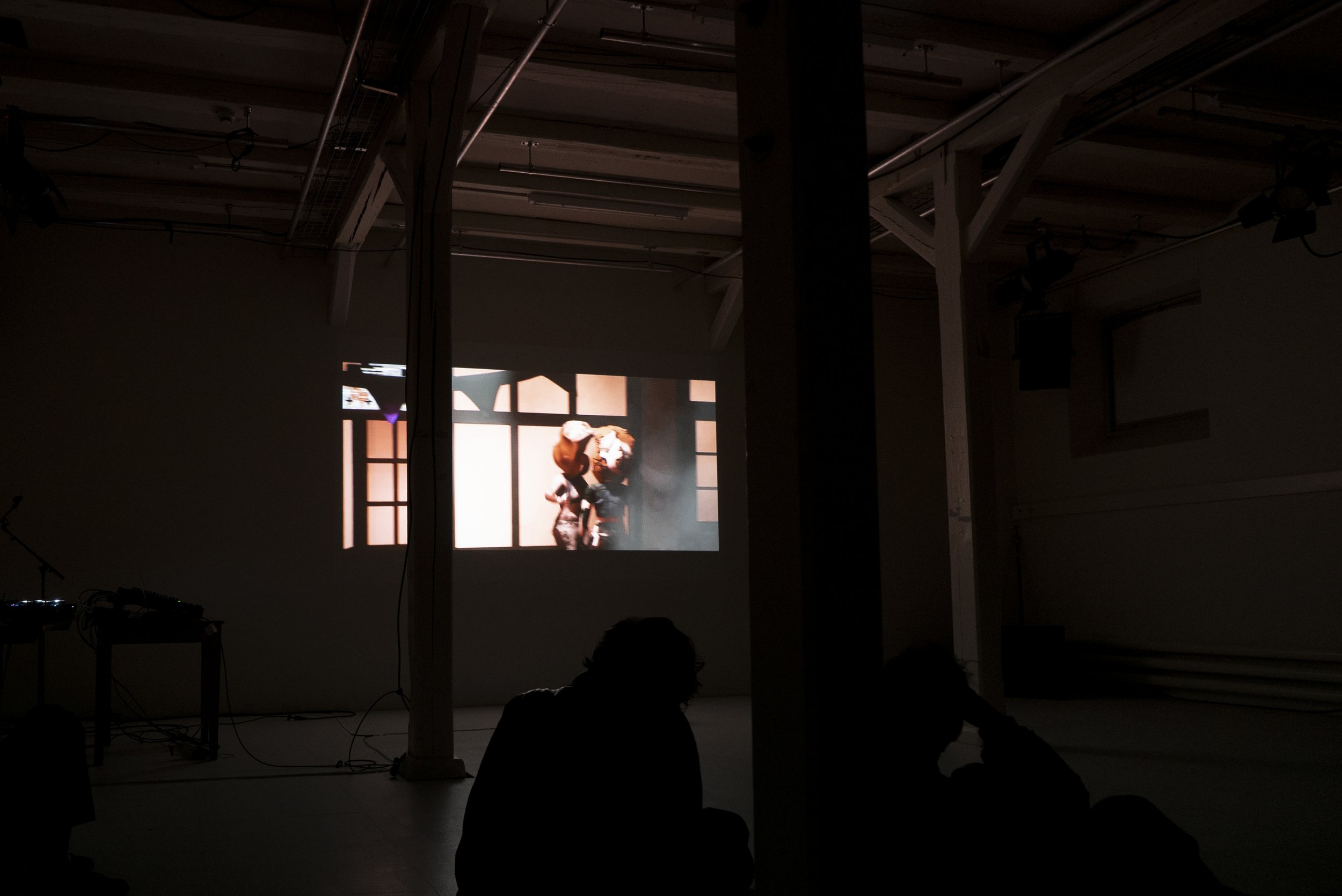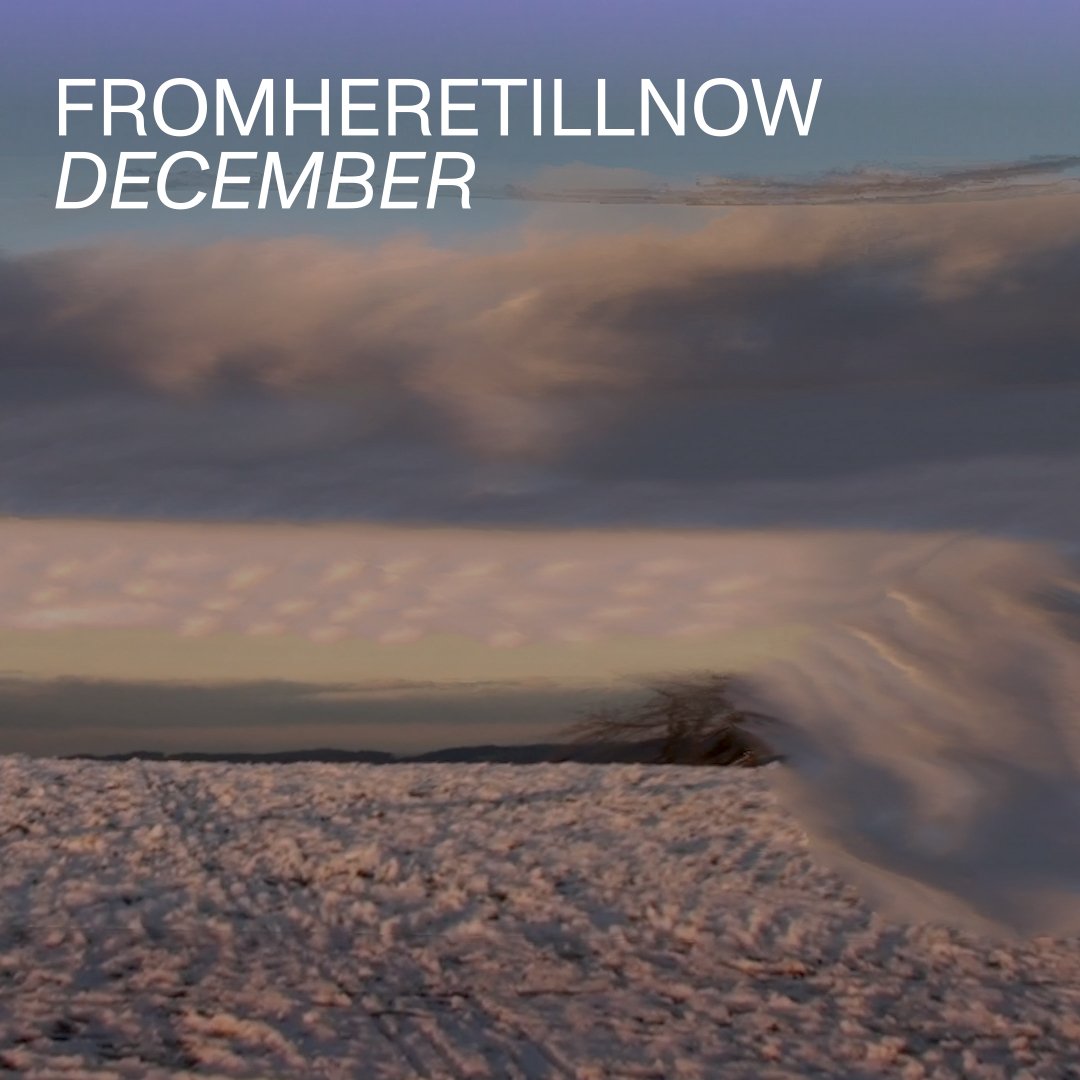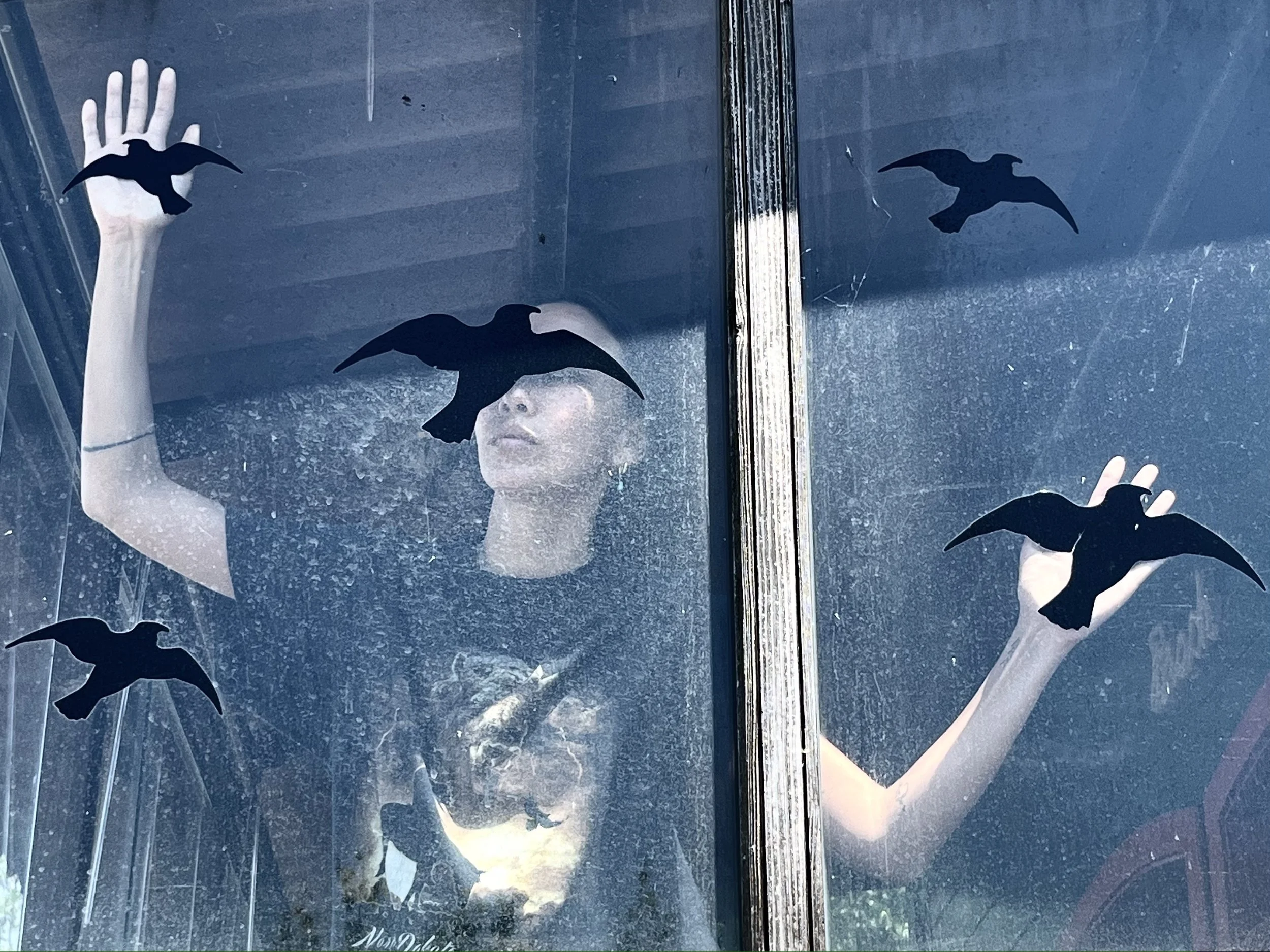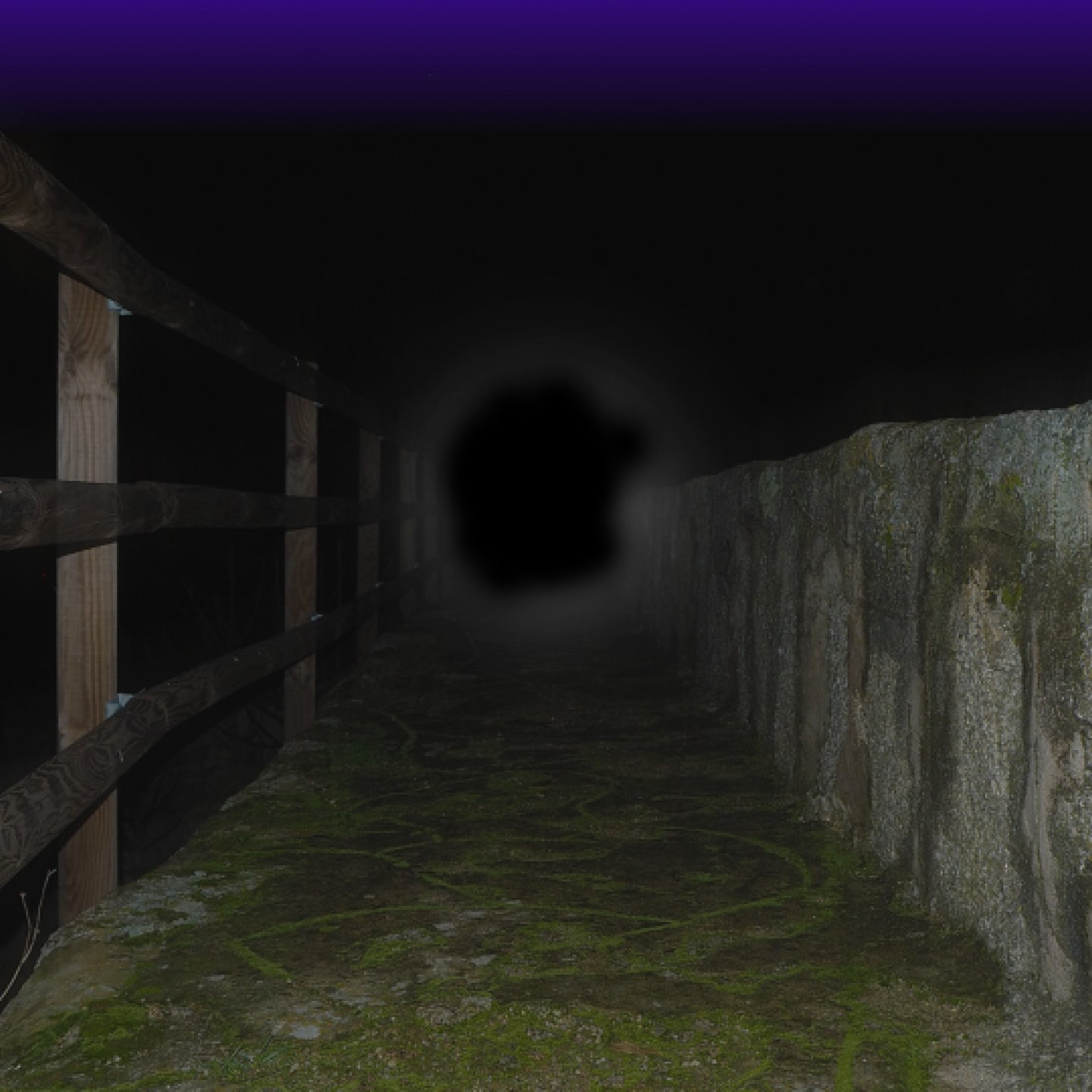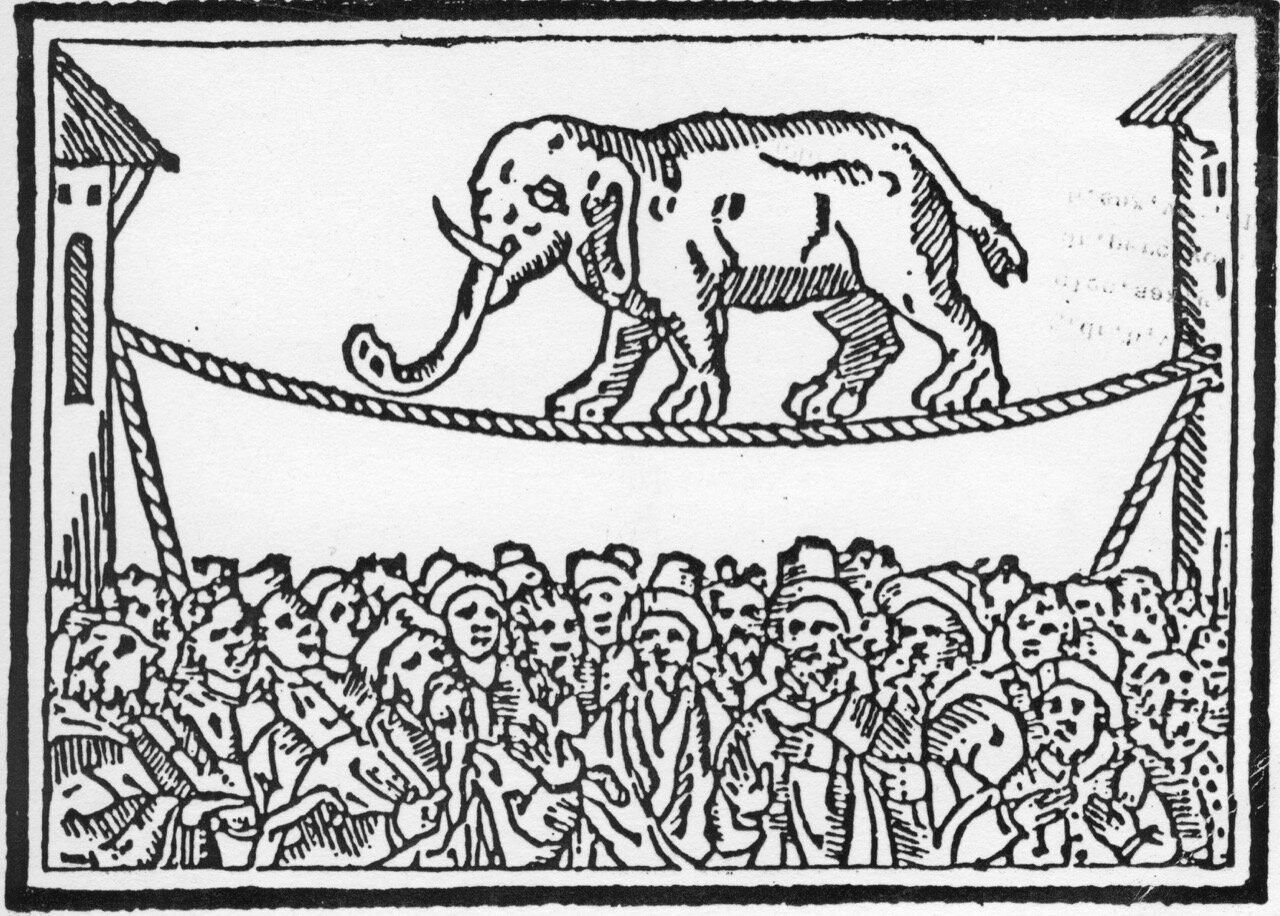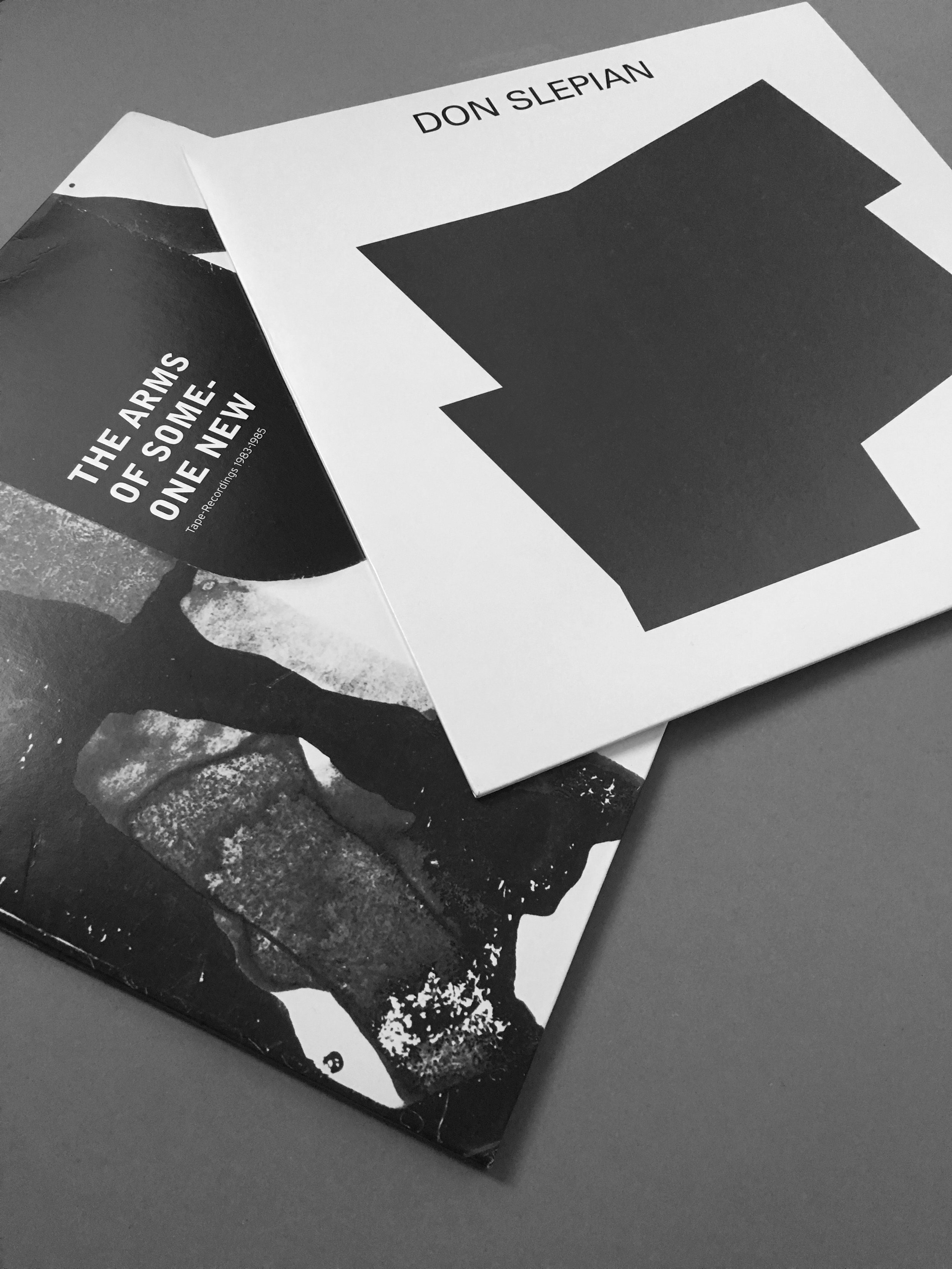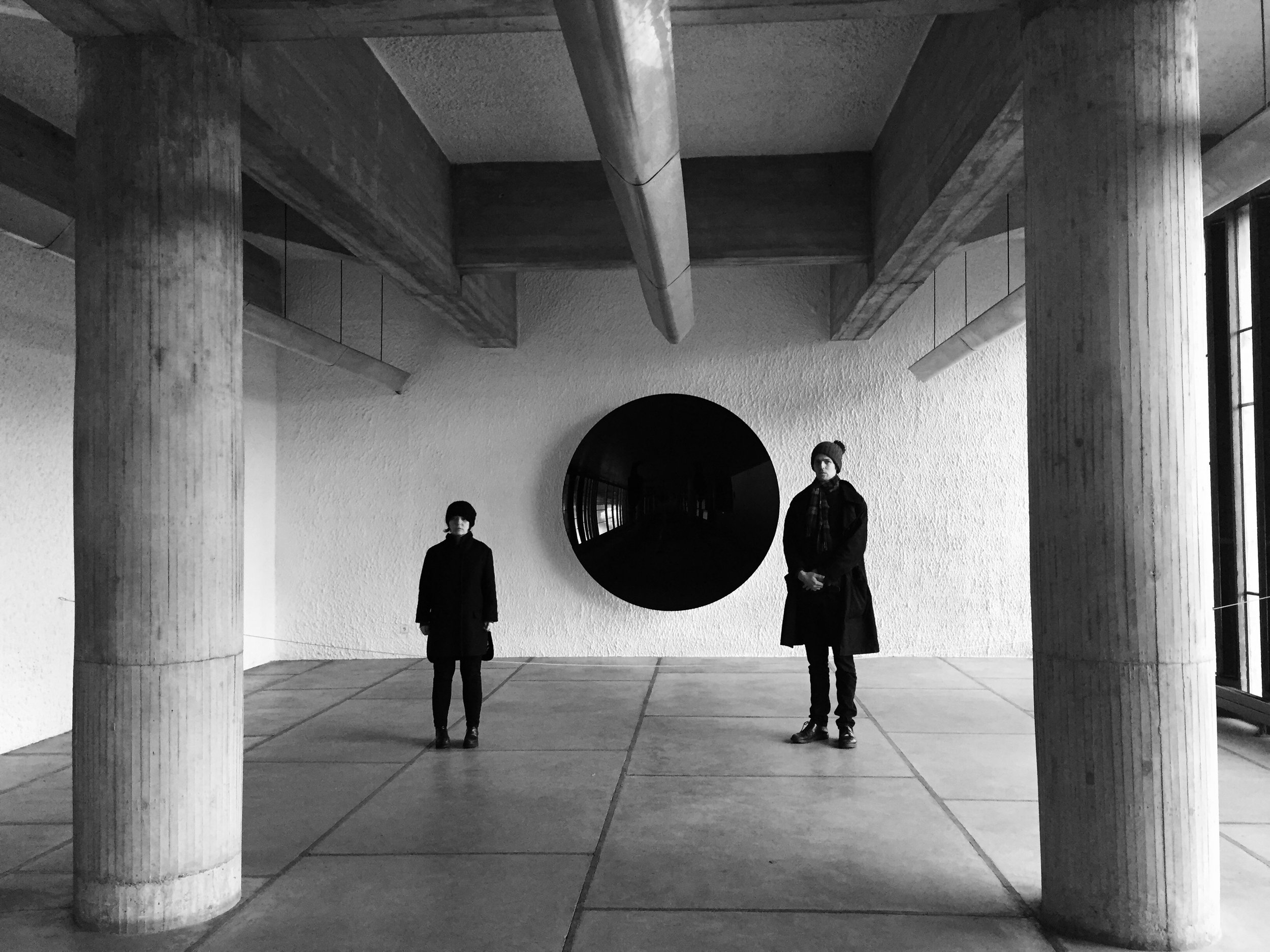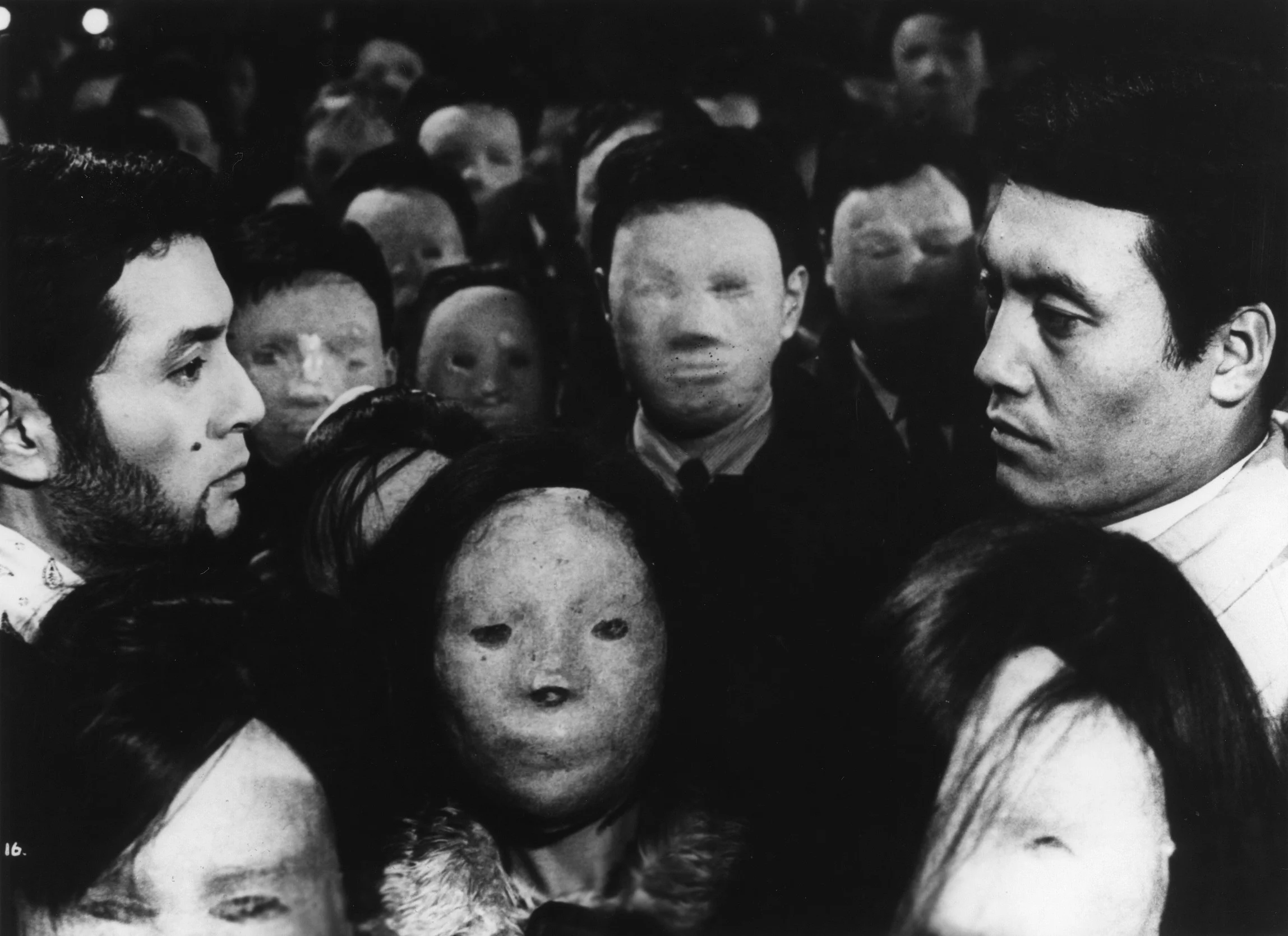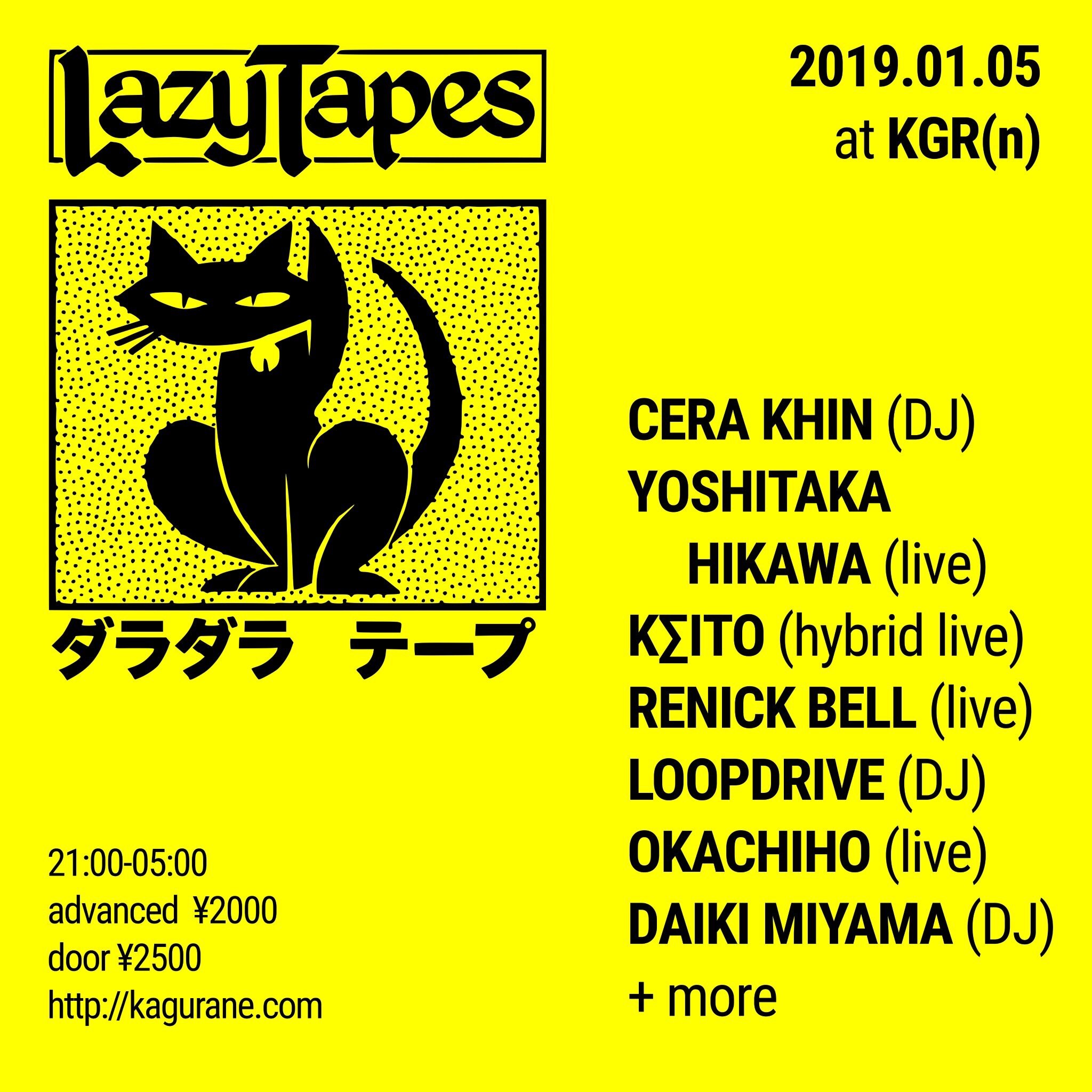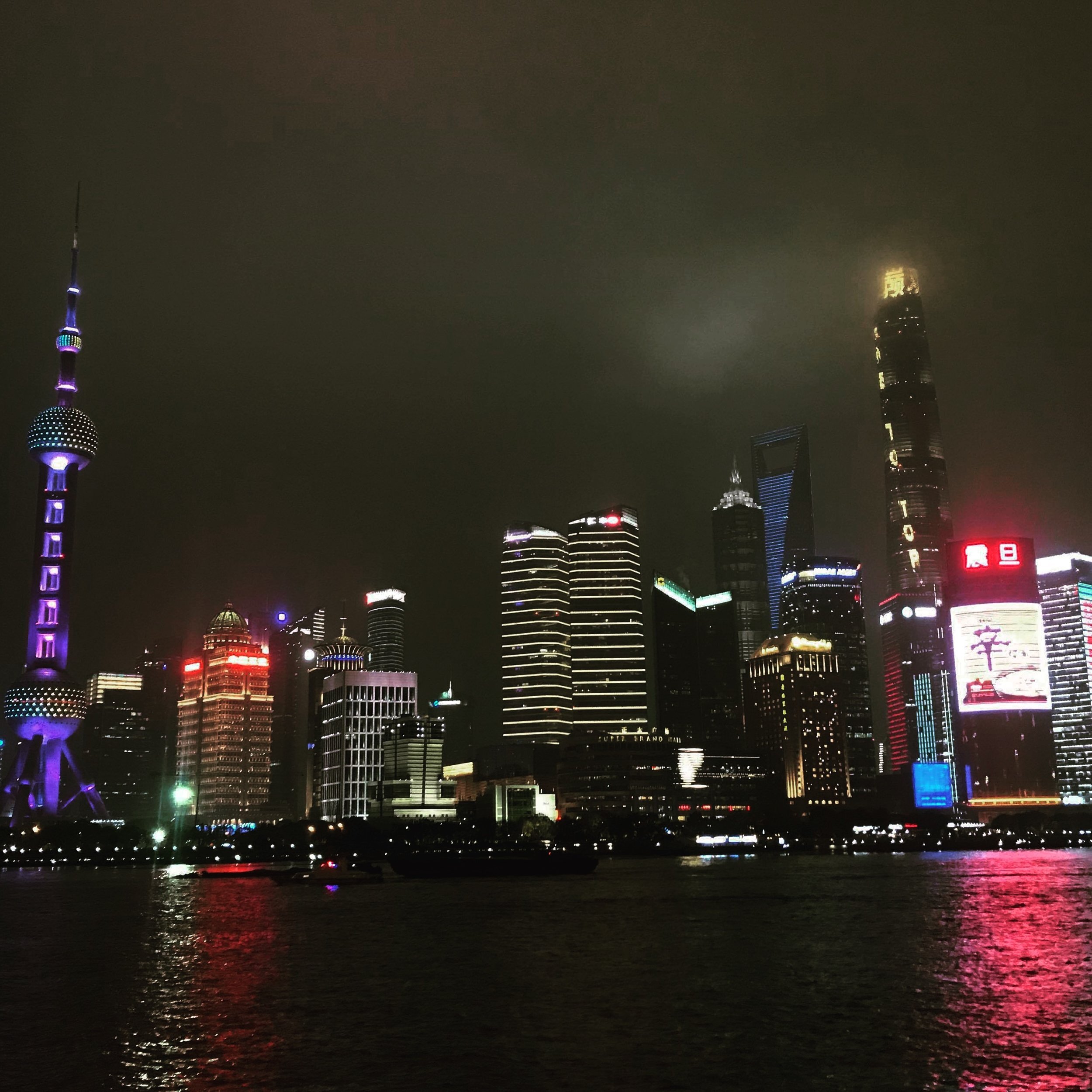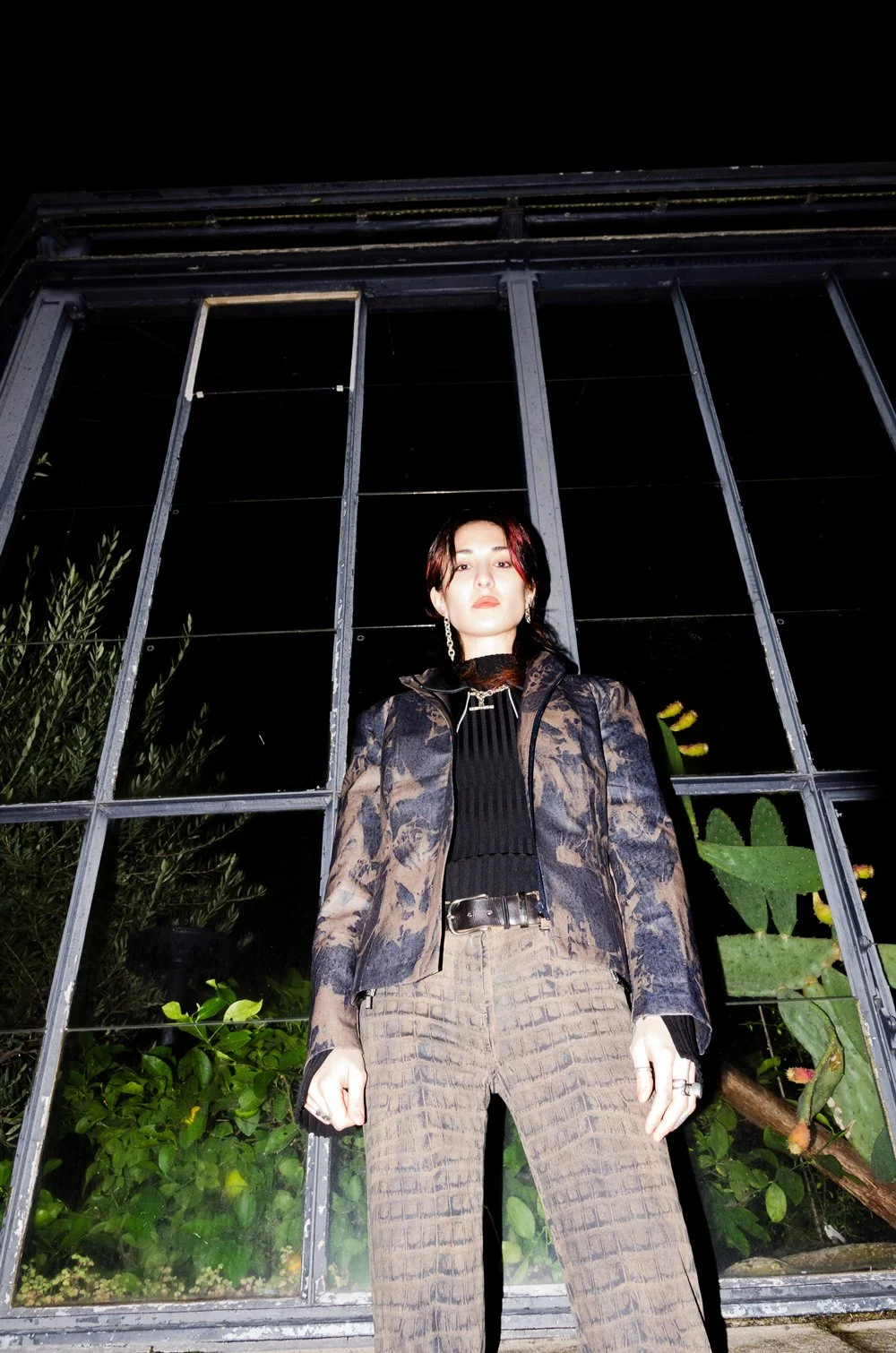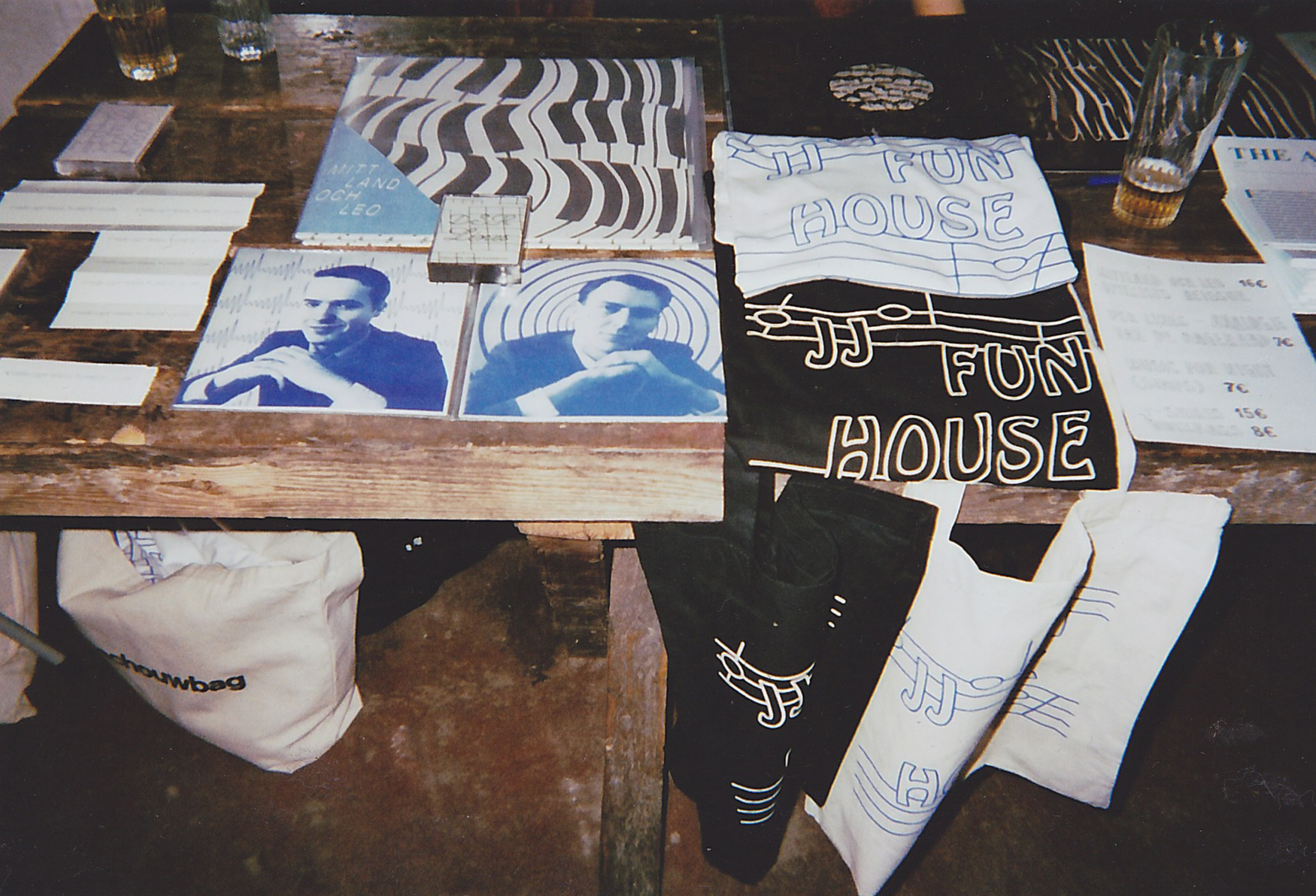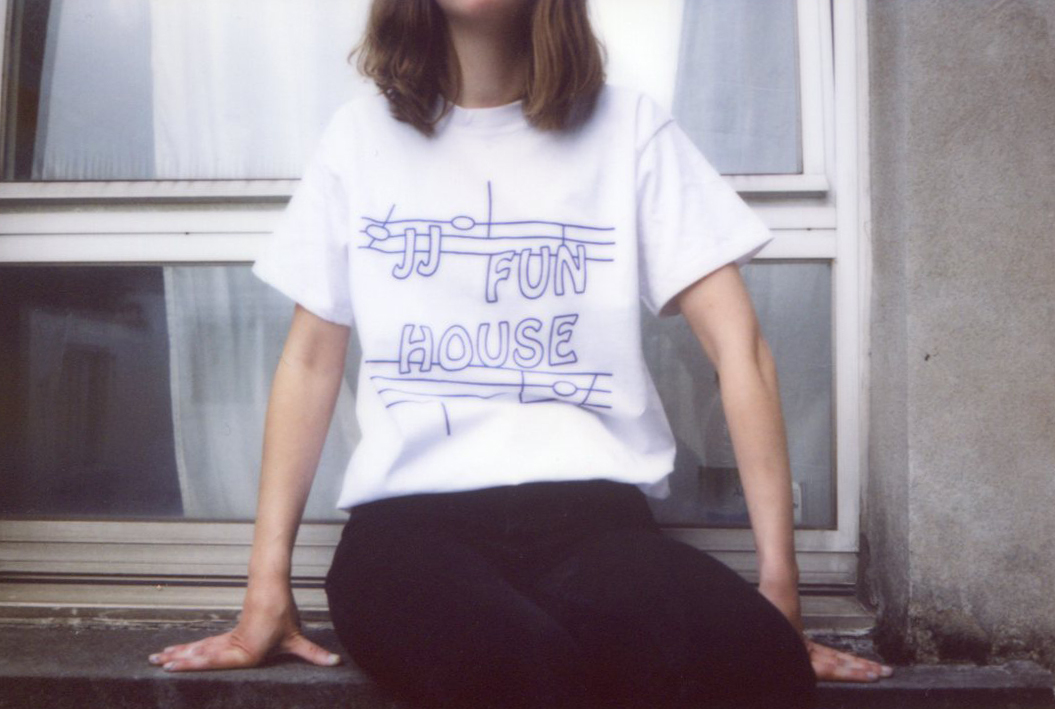Bilder: © Bahar Kaygusuz / Johanna Odersky
Interview: Marc Jauss
Read the english version
EIN RAUM MIT MEHREREN SCHICHTEN:
JOHANNA ODERSKY VERÖFFENTLICHT “THE ITCH”
Unmittelbar vor dem Launch von Johanna Oderskys neuem Album, welcher im Projektraum Ashley in Berlin stattfand, traf ich mich zu einem Gespräch mit der Künstlerin und Musikerin in ihrem Studio außerhalb der hektischen Großstadt. Gemeinsam erkundeten wir die Facetten von Räumen, Emotionen und die transformative Wirkung des Samplings auf ihre künstlerische Praxis.
Marc Jauss: Wo befinden wir uns gerade?
Johanna Odersky: In meinem Kunststudio in Französisch Buchholz, Berlin.
MJ: Mit welchen Themen beschäftigst du dich zur Zeit in deiner Arbeit?
JO: In den letzten Jahren bin ich zwischen einer bildhauerischen und einer musikalischen Praxis hin und her gependelt. Diese nähern sich zunehmend an, unterscheiden sich jedoch auch grundsätzlich in den sozialen Räumen, die sie hervorrufen und den Ökonomien, die um sie herum entstehen. In meiner Arbeit interessiere ich mich vor allem für räumliche Systeme, die sich nicht auf vordefinierte oder feste Rahmenbedingungen stützen, sondern sich eher dynamisch aus sich selbst herausbilden. Dieses Interesse erforsche ich sowohl skulptural als auch klanglich.
MJ: Kannst du das noch etwas ausführen?
JO: Meine Malereien zum Beispiel, die ich auf gefaltete Leinwände anfertige, enthalten weder Perspektive noch klare Linearität, sondern eher eine Art Schwerkraft, die sich dehnt und den Bildraum in sich zusammenfallen lässt. Ähnlich betrachte ich auch meine Kompositionen als sich immer neu entfaltende Räume. Ich benutze dafür sich wiederholende Texturen und Samples und überlagere diese zu einem dichten sensorischen Geflecht, das sich so anfühlt, als könne es sich immer weiter erstrecken. Allerdings habe ich für mein Album “The Itch” neues erprobt. Ich hatte mir vorgenommen, eine Pop-Produktion zu machen. Daher sollten die Tracks auf dem Album geschliffener, ‘abgeschlossener’ klingen.
MJ: Gibt es auch Tage, an denen du dir klar vornimmst, an was du arbeiten möchtest? Was sind deine Impulse?
JO: Es ist auf jeden Fall sehr intuitiv. Ich warte eigentlich immer auf einen Anlass, um meine Arbeiten umzusetzen. Wenn gerade kein Projekt ansteht, dann sammle ich hauptsächlich Material: Objekte, Bilder, Textilien, Melodien, Wörter… Dinge, die aufgrund ihrer Beschaffenheit, Interesse erwecken oder eine emotionale Bedeutung für mich haben. Aufbewahrt enthalten sie einen Gedanken oder ein Gefühl, bis ich sie zu einer neuen Gegebenheit wieder einsetze. Wie beim Sampling in der Musik, vermische ich auch gerne materielle "Ausschnitte". So entstehen dann oft meine skulpturalen Arbeiten.
MJ: Dein neues Album “The Itch” wurde kürzlich im Berliner Projektraum Ashley veröffentlicht. Mit welchen Themen hast du dich bei der Entstehung auseinandergesetzt?
JO: Inhaltlich wollte ich mit “The Itch” eine Art Spannungszustand zwischen zwei widersprüchlichen Verlangen schaffen. Einerseits beschreibt das Album den Wunsch, dem eigenen Sein zu entfliehen, andererseits enthält es auch eine Sehnsucht nach Verortung und Verbundenheit. Diese Dissonanz durchdringt alle Tracks und “juckt” die Zuhörer*innen.
MJ: Was waren deine Erfahrungen mit der lyrischen Ebene? Wie haben sich deine Songtexte entwickelt?
JO: Es fällt mir immer sehr schwer mit Sprache zu arbeiten bzw. von Grund auf einen Text zu schreiben. Deswegen habe ich für die Lyrics auch mit Fundstücken und Samples gearbeitet. Ich habe ein sehr langes Textdokument angelegt mit Wörtern, Sätzen und Sprach Fragmenten, die aus unterschiedlichen Quellen stammen. Manchmal waren es auch einfach Lyrics, die ich von anderen Songs missverstanden habe. Ich finde es interessant, wie die Bedeutungs- und die Klangseite der Sprache miteinander neue Assoziationen hervorbringen, die von der eigentlichen Bedeutung abweichen oder diese stützen. Als sich dann genug Text angesammelt hat, habe ich damit sehr lange rumprobiert, kombiniert, ausgetauscht... bis es mir gefallen hat, wie die Wörter klingen und welche Bedeutung sie dadurch annehmen.
MJ: Welche Aspekte waren für dich bei der Gestaltung der Show wichtig?
JO: Weil es ein Self-Release war, konnte ich die Veröffentlichung glücklicherweise sehr frei gestalten. Ich wollte das Album auf verschiedenen sinnlichen Ebenen erfahrbar machen und besonders interessant dabei fand ich zu sehen, wie verschiedene physische, mentale und soziale Räume durch die Musik entstehen können.
Auf einer musikalischen Ebene ist “The Itch” stark emotional aufgeladen und umschreibt das Gefühl, in Raum und Zeit verloren zu sein. Es ist ein dissoziativer Seinszustand, der mit einer geteilten Realität bricht und versucht, diese durch melodisch wiederkehrende Erinnerungen wieder zusammenzusetzen. Die Ausstellung im Projektraum Ashley war wiederum eine physische Mise-en-scene des Albums und fungierte buchstäblich als Bühne. Sie eröffnete mit der Live-Aufführung der Musik aus “The Itch” und versuchte mit der Bühnenpräsenz von “Iku” die Aufmerksamkeit zurück auf den Körper als Ort physischer und emotionaler Erfahrung zu lenken. Parallel zum Auftakt des Albums wurden Skulpturen ausgestellt, die mit Textilien, Licht und Ton spielten. Zusammen bildeten diese Elemente eine Kulisse, die an Orte des Musikkonsums, wie Clubs oder Konzert Venues erinnerte, und bezogen diese somit in den Ausstellungsraum mit ein.
Eine Website ist momentan auch noch in Bearbeitung. Sie dient sowohl als Dokumentation des Events bei Ashley, als auch als audiovisueller Listening Room. Ich möchte durch Videos, Fotos und 3D Scans die physischen Elemente der Ausstellung einbringen, wobei aber der gemeinschaftliche Aspekt des Events wegfällt und somit nur eine virtuelle Spiegelung des Projekts bleibt.
MJ: Da wir gerade von Räumen sprechen, in welchen Räumen fühlst du dich wohl?
JO: Ich fühle mich am wohlsten in Räumen, die eine materielle Familiarität für mich haben. Ich mag es, Objekte um mich herum zu haben, die sich wie eine Erweiterung meiner selbst anfühlen. Die sinnlichen Beziehungen zu diesen Orten und meine Spuren quasi in Ihnen wiederzufinden gibt mir ein Gefühl der Beständigkeit.
MJ: Da kommt mir gerade dein Konzert Confinement in D minor aus dem Covid Jahr 2021 in den Sinn…
JO: “Confinement in D minor" entstand ursprünglich als Online-Performance für Club Quarantine, eine Online-Tanzparty, die während der Pandemie COVID-19 einen digitalen Raum für die queere Community ermöglichte. Die meisten von uns waren damals in Quarantäne und daher habe ich das Video alleine von Zuhause gedreht. Mich interessierte dabei die Intimität, die durch den Einblick in das “Zuhause” von jemandem entsteht. Obwohl es mir sehr wichtig erscheint, finde ich es bei Live-Auftritten oft schwierig, gerade diese Nähe zu schaffen.
MJ: Für deine Auftritte gestaltest du deine Outfits oft selber. Welche Rolle spielt Fashion bei deinen Shows?
JO: Ich habe schon immer gerne mit Mode und “Verkleidung” herumgespielt und durch die Performances hat es sich dann recht organisch in meine Praxis eingefügt. Mich fasziniert vor allem der sensorische Aspekt von Mode und Textilien. Ich liebe es, Stoffe anzufassen, Volumen durch viele Schichten aufzubauen, Muster und Texturen zu kombinieren. Es spiegelt auch auf gewisse Art meine Musikproduktion wider, die stark von diesem Layering Gedanken geprägt ist.
MJ: Was war dein schlimmstes Live-Erlebnis?
JO: Ich habe als Kind Klavier gelernt und es gab in der Schule Abende, wo die Schüler für die Eltern gespielt haben. Ich hatte eigentlich nie Probleme damit, bis ich eines Tages trotz guter Vorbereitung einen Blackout auf der Bühne hatte. Ich wusste nicht mal mehr die erste Note. Seitdem habe ich vor jedem Auftritt hemmendes Lampenfieber.
MJ: Und konntest du eine Technik entwickeln, die dir hilft dich zu entspannen?
JO: Es hilft vielleicht ein wenig, einen "Charakter" einzunehmen. Das passiert für mich dann hauptsächlich durch die Kostüme. Trotz Lampenfieber finde ich aber auch, dass mir die Performances eine wertvolle Entwicklung ermöglicht haben. Durch die Bühnenpräsenz habe ich einen neugierigen Blick auf das Element der Bühne und die Potenziale, die diese birgt, entwickelt. Ein Blick, der den Umweg über meine skulpturalen Arbeiten nimmt.
MJ: Gibt es Menschen aus deinem Umfeld, die du an dieser Stelle gerne erwähnen möchtest? Mit wem arbeitest du gerade zusammen?
JO: Ich finde eigentlich alle meine Freunde spannend und inspirierend. Besonders schön ist es immer, wenn man zusammen an etwas arbeiten kann. “The Itch” ermöglichte mir zum Beispiel die Zusammenarbeit mit Joon Yeon Park, die das Cover Artwork gestaltet hat. Ich bin ein großer Fan von Joon’s Malereien, Drucken und Patchworkarbeiten. Durch die Verwendung von Mustern, Dekoration und Ornamentik haben ihre Werke einen verspielten, sinnlichen Charakter, hinter dem sich allerdings eine ausgesprochen akribische Technik verbirgt.
Mit François Pisapia habe ich über die letzten zwei Jahre an einer audiovisuellen Performance gearbeitet, die die Entwicklung des Albums immens beeinflusst hat.
Francois arbeitet mit Video, Fotografie und Text. Ich bin immer wieder erstaunt über seine Fähigkeit, Elemente des Dokumentarischen und der Fantasie nahtlos miteinander zu verbinden. Es ist eine ganz sorgsame Annäherung an das Gegebene und dabei entsteht Nähe, die für den Betrachter sehr spürbar wird.
Im Moment kollaboriere ich mit Yong Xiang Li an einem Soundtrack. Obwohl er hauptsächlich mit Malerei und Skulptur arbeitet, tauchen auch immer wieder mal (Musik)videos in seiner Praxis auf. Da die Arbeit noch in Entstehung ist, kann ich nicht so viel darüber erzählen, aber wir produzieren wieder einen Cover Song mit überarbeiteten Lyrics. Ähnlich wie Yong Xiang in seinen Videos den Lyrics von existierenden Liedern eine neue Bedeutung verleiht, erstellt er auch in seinen anderen Werken geschickte und humorvolle Neuformulierungen kultureller und historischer Narrativen.
Weaving wistful, introspective lyrics into a densely layered landscape of samples and sonic textures, “The Itch” interrupts reality and inserts an altered state of being—outside consensual time and space—in the here and now. If reality posits a stable relation between body, consciousness, and environment, “The Itch” longs for its reversal: An oscillating movement, floating without ground, piecing reality back together through melodically recurring memories. In another register, one would call this desire. In yet another, the virtual.




